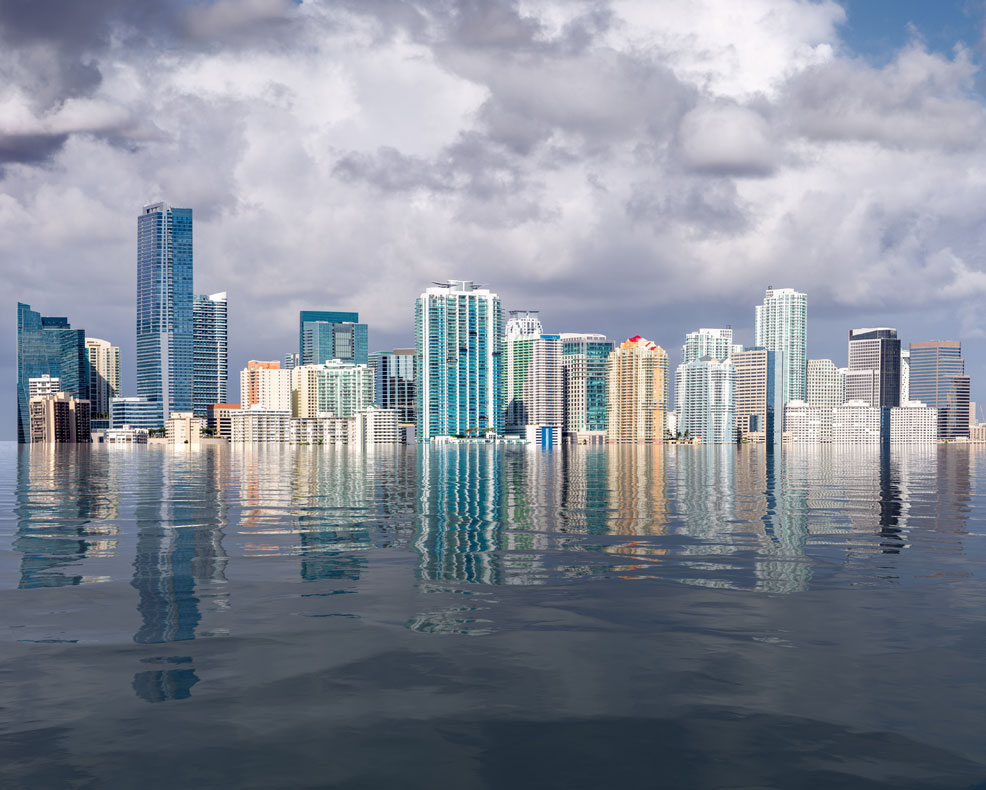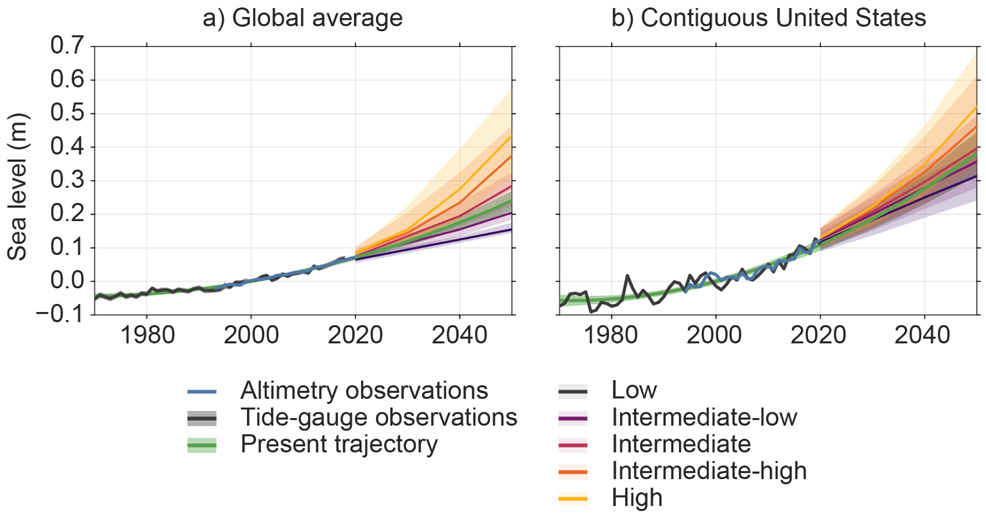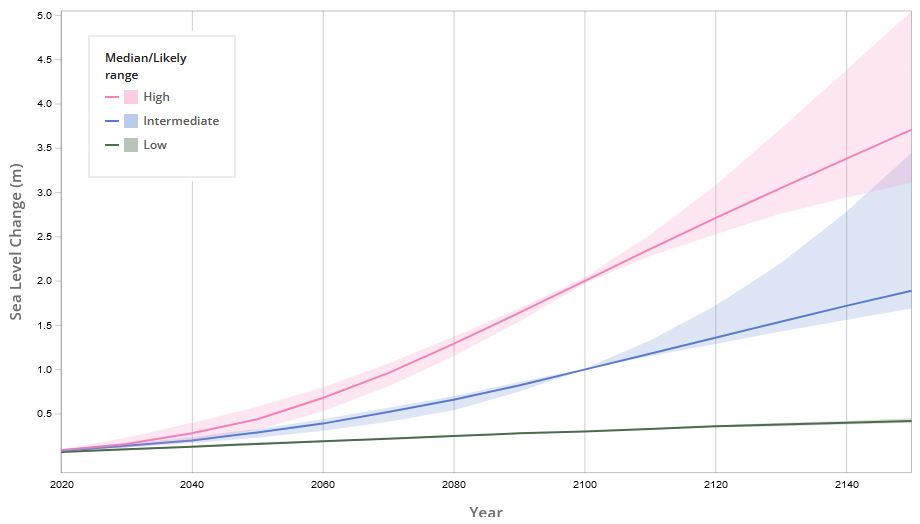
18th February 2022 NASA predicts sea level rises to 2150 NASA has published its latest Sea Level Rise Technical Report, an update of the 2017 edition, which includes projections for sea level rise through to the year 2150. The agency warns that sea levels may rise as much over the next 30 years as during the previous hundred.
Coastal flooding will increase significantly over the next 30 years due to sea level rise, according to a new report by an interagency task force that includes NASA, the National Oceanic and Atmospheric Administration (NOAA), and other federal agencies. Global and Regional Sea Level Rise Scenarios for the United States concludes that sea level along U.S. coastlines will rise between 25 and 30 centimetres (10 to 12 inches) on average above today's levels by 2050. The report – an update to a 2017 version – forecasts sea level to the year 2150 and, for the first time, offers near-term projections for the next 30 years. Agencies at the federal, state, and local levels use these reports to inform their plans on anticipating and coping with the effects of sea level rise. "This report supports previous studies and confirms what we have long known – sea levels are continuing to rise at an alarming rate, endangering communities around the world," said NASA Administrator Bill Nelson. "Science is indisputable and urgent action is required to mitigate a climate crisis that is well underway. NASA is steadfast in our commitment to protecting our home planet by expanding our monitoring capabilities and continuing to ensure our climate data is not only accessible but understandable." The team developed their near-term projections by drawing on an improved understanding of how the processes that contribute to rising seas – such as melting glaciers and ice sheets, as well as complex interactions between ocean, land, and ice – will affect ocean height. "That understanding has really advanced since the 2017 report, which gave us more certainty over how much sea level rise we'll get in the coming decades," said Ben Hamlington, a research scientist at NASA's Jet Propulsion Laboratory in Southern California and one of the update's lead authors. By 2050, the average sea level rise along the U.S. coastline is expected to exceed that measured over the last 100 years (1922-2022). It will vary regionally because of changes in both land and ocean height. By 2050, "moderate" (typically damaging) flooding is expected to occur, on average, more than 10 times as often as it does today. This could be intensified by local factors, such as rainfall, river discharge, wave impacts like coastal erosion, and existing infrastructure.
The team developed an online mapping tool to visualise their state-of-the-art projections on a localised level across the country. This includes each decade from now until 2100, with an additional estimate for 2150. A global projection up to 2150 is also available. "The hope is that the online tool will help make the information as widely accessible as possible," said Hamlington. Under the agency's "high" scenario, global sea levels are expected to see a 3.7 metre (12' 2") increase by 2150. However, the upper range for that forecast includes the possibility of an even greater increase to potentially 5.04 metres (16' 6"). This assumes that worldwide emissions of heat-trapping greenhouse gases remain on an upward trajectory. The intermediate and most likely scenario, according to NASA and NOAA, is a 1.88 metre (6' 2") rise by 2150. This has an upper range to 3.4 metres (11' 2") and a lower range at 1.68 metres (5' 6"). All scenarios have at least some sea level rise, even the lowest range of the "low" scenario, which sees 39.5 centimetres (1' 4") by 2150 – showing that sea levels are likely to remain a problem for humanity well into the future. Even a 39.5 centimetre rise would inundate huge areas of coastline. "Multiple lines of evidence provide increased confidence, regardless of the emissions pathway, in a narrower range of projected global, national, and regional sea level rise at 2050 than previously reported," the report concludes. "By 2050, the expected relative sea level will cause tide and storm surge heights to increase and will lead to a shift in U.S. coastal flood regimes, with major and moderate high tide flood events occurring as frequently as moderate and minor high tide flood events occur today. Without additional risk-reduction measures, U.S. coastal infrastructure, communities, and ecosystems face significant consequences." "This is a global wake-up call and gives Americans the information needed to act now to best position ourselves for the future," said Rick Spinrad, PhD, Administrator of the NOAA. "As we build a climate-ready nation, these updated data can inform coastal communities and others about current and future vulnerabilities in the face of climate change and help them make smart decisions to keep people and property safe over the long run."
Global projections of sea level rise, 2020 to 2150, relative to a baseline of year 2000.
Comments »
If you enjoyed this article, please consider sharing it:
|









